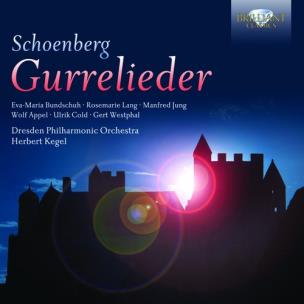- Regulamin
- Koszty dostawy
- Kontakt
- Dziś w ofercie 231 003 produkty
KSIĄŻKI
- Albumy
- Beletrystyka
- Biografie
- Dla dzieci i młodzieży
- Edukacja
- Ekonomia i biznes
- Ezoteryka
- Historia
- Informatyka
- Kalendarze
- Komiksy
- Kryminał i sensacja
- Kultura i sztuka
- Literatura faktu
- Literatura kobieca
- Literatura piękna
- Medycyna
- Nauka języków obcych
- Nauki humanistyczne
- Nauki przyrodnicze
- Nauki ścisłe
- Podręczniki
- Poradniki
- Prawo i administracja
- Przewodniki i podróże
- Psychologia
- Religia
- Sport
- Technika
- Zdrowie i uroda
ZABAWKI
- Artykuły dla niemowląt
- Bączki
- Bujaki i skoczki
- Ciągnij / pchaj
- Dla niemowlaka
- Grzechotki i gryzaki
- Karuzele i pozytywki
- Maty i centra zabaw
- Projektory i lampki
- Sortery i piramidki
- Zabawki
- Edukacyjne i kreatywne
- Figurki
- Klocki
- Lalki
- Pojazdy
- Pluszaki i maskotki
- Sport i rekreacja
- Zabawa w dom
- Zabawki drewniane
- Puzzle
- Do 200 elementów
- 201-500 elementów
- 501-1000 elementów
- Ponad 1000 elementów
- Puzzle 3D
ART. PAP
- Artykuły biurowe
- Artykuły piśmiennicze
- Bloczki i kartki samoprzylepne
- Dziurkacze
- Kalkulatory
- Nożyczki i nożyki
- Skoroszyty
- Teczki
- Wizytowniki
- Zszywacze
- Artykuły szkolne
- Akcesoria szkolne
- Modelowanie
- Notatniki i zeszyty
- Piórniki
- Plecaki i torby
- Pojemniki na śniadanie
- Pomoce naukowe
- Przybory matematyczne
- Przybory rysunkowe
- Upominki i gadżety
- Akcesoria do książek
- Artykuły balowe
- Breloki i zawieszki
- Drobiazgi, różności
- Kubki
- Oferta Świąteczna
- Papeteria, kartki i naklejki
- Skarpetki Many Mornings
- Upominki
GRY
MULTIMEDIA
- Audiobooki
- Beletrystyka
- Biografie i wspomnienia
- Dla dzieci i młodzieży
- Fantastyka
- Filozofia i religia
- Historia
- Literatura faktu i reportaż
- Poradniki
- Sensacja i kryminał
- Filmy DVD/BD
- Animowane
- Biograficzne
- Fantasy
- Horrory
- Komedie
- Romanse
- Science Fiction
- Sensacyjne / kino akcji
- Thrillery
- Muzyka CD
- Alternatywna
- Blues
- Dla dzieci
- Jazz
- Klasyczna
- Piosenka aktorska i poetycka
- Pop
- Rock
- Świąteczna i kolędy
- Akcesoria GSM
- Głośniki
- Kable i adaptery
- Klawiatury
- Myszy
- Słuchawki
PROMOCJE
ZDROWIE
LEGO

Schoenberg: Gurrelieder
Wydawca:
Brilliant Classics
EAN:
5028421947242
oprawa:
Plastikowa
format:
14.0x12.0cm
język:
angielski
rok wydania:
2013
(0) Sprawdź recenzje
Opis produktu
Zasady bezpieczeństwa
Gurrelieder is a gigantic, post-Wagnerian cantata that, in retrospect, seems like the terminus ante quem for Romanticism in music, beyond which further elaboration or intensity was surely impossible, and led surely if not inevitably to the Expressionism which the prodigious Schoenberg felt compelled to explore in works such as Erwartung, and thence, infamously, to the 12-tone system of musical composition from which, at least superficially, the work appears so distant in form and idiom.
The composer was just 26 when he began work on a song-cycle, which in its fully orchestrated form became the first part of Gurrelieder, based on a poem within a novel by the Danish novelist, naturalist and atheist Jens Peter Jacobsen, which the author in turn had based on folk-legends of the medieval King Waldemar -- who, having taken a mistress, Tove, is driven to bitter madness by Tove's murder at the behest of his wife, condemns God and is in turn condemned to terrorise the land in ghostly form with his band of vassals until the passing of the seasons and the rising of the sun bestows the kind of redemption offered to the Flying Dutchman.
The orchestration, including parts for iron chains and sundry kinds of drum, could hardly be more lavish, and it is faithfully conveyed both by the German radio recording and Herbert Kegel's patient approach to this massive score. Singers of aptly Wagnerian scale include (in the part of Waldemar) Manfred Jung, who was a favoured Siegfried at Bayreuth during the 70s and 80s.
Other information:
- Written in a lush, late-romantic style heavily influenced by Wagner and Mahler, Schoenberg's Gurrelieder tells the story of Waldemar, King of Denmark, his love for his mistress Tove, and the murder of his wife, Queen Helvig.
- The Gurrelieder is a Cantata of immense proportions, for vocal soloists, narrator, chorus and orchestra, a unique work never failing to impress, by the composer who later turned radically to atonality and dodecophany.
Excellent performance by conductor Herbert Kegel, a specialist in 20th century music, and his Rundfunkchor Berlin, the Dresdner Philharmonie extended with members of the Radio Orchestra Leipzig, the sheer size of this orchestra doing justice to the monumentality of the music.
- "[There is] a satisfying sense that the vast forces Schoenberg calls for are all there...and the expanded brass section makes a magnificently rich sound... In the role of Tove, Bundschuh is splendid: she has the Wagnerian amplitude the music needs but unlike many such voices hers retains its beauty in quiet singing." (Gramophone, December 1997).
- Booklet contains explanatory notes.
CENA:
25,35
zł
Cena detaliczna:
29,90 zł
15%
rabatu
Najniższa cena z ostatnich 30 dni: 25,29 zł
Produkt niedostępny
Uwaga!!!
Ten produkt jest zapowiedzią. Realizacja Twojego zamówienia ulegnie przez to wydłużeniu do czasu premiery tej pozycji. Czy chcesz dodać ten produkt do koszyka?


Wybierz wariant produktu
